Daiwa House Industry Mie Factory (Komono-cho, Mie-gun, Mie Prefecture)Biodiversity Conservation Activities with the Local Community

Since 2012, Daiwa House Industry's Mie Factory has been conducting ecological surveys and pond draining activities twice a year in the retention pond located on its premises, in collaboration with the local community.
1. Background
Within the premises of Daiwa House Industry's Mie Factory is a large retention pond designed to collect rainwater (approx. 6,000 m2). The water quality of this retention pond is monitored annually. In 2011, water quality surveys revealed a decline in water quality. Since the factory's wastewater does not flow into the pond, there was uncertainty about how to address the issue from a fundamental point of view. After consulting with Azuma Sangyo, a company that handles the factory's septic tanks, it led to a proposal for ecological conservation activities, including pond draining (a method of completely draining the pond's water and sun-drying the pond bed). Then, in 2012, an initial pond draining was conducted with the participation of 60 employees. This initiative led to the establishment of the Mie Biodiversity Partnership Agreement between Mie Prefecture, Daiwa House Industry, Azuma Sangyo, and the NPO Chotto Shizen, evolving into regular wildlife observation events involving local community participation.
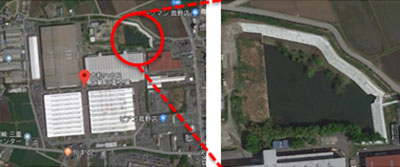
Daiwa House Industry Mie Factory/Retention Pond
■Daiwa House Industry Mie Factory
- Production Goods
- Components for single-family houses and rental housing
- Location
- 3997-1 Takenari, Komono-cho, Mie-gun, Mie Prefecture 510-1312
- Certifications
- ISO9001, ISO14001 obtained
2. Biodiversity Survey (2012 and on)
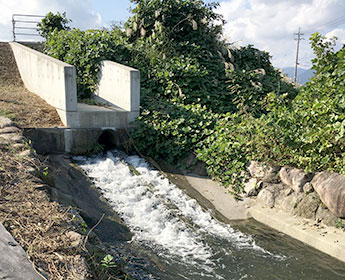
Fishway
A stair-like path for fish established between the retention pond and downstream waters. This allows even the smaller fish to climb up.
The first pond draining conducted in 2012 uncovered about 1,000 crucian carp, koi, and Louisiana crawfish that are non-native species, along with sludge accumulating up to knee height. The removal of these and the sun-drying of the pond bed improved the water quality. Subsequent activities included the installation of a fishway and twice-yearly surveys of the organisms inhabiting the retention pond and its surroundings, implementing ecosystem monitoring. We still drain the pond regularly to maintain water quality.
■Pond draining in 2012

Sludge up to the knees
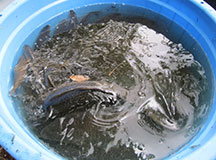
Captured a large number of non-native species
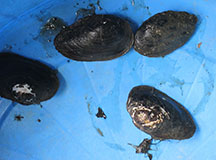
The rare species Unio douglasie was discovered too
■Wildlife observation event held in 2019
NPO Chotto Shizen's Sakakieda and Uemura initiated the wildlife observation event. Children could be seen eagerly placing various creatures they found into buckets. Even adults became kids again, diligently searching for anything alive. The excitement was palpable as the call “10 minutes left!” elicited a “Oh no!” from the participants, showing they truly enjoyed the event.
Captured creatures were categorized by type, with Uemura providing detailed explanations. Participants learned about challenging terms like native and non-native species and about the ecosystem. Children typically unaccustomed to interacting with insects or fish were keenly attentive.
- Date
- October 2019
- Participants
- 16 adults / 16 children
- Schedule
- 9:30 Pre-event briefing
10:00 Start catching fish
11:00 Explanation of captured creatures
12:00 Bug catching in the habitat (for those interested)
13:00 End

1. It's time to go to the wildlife observation event!
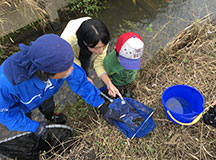
2. Asking questions about the captured creatures on the spot
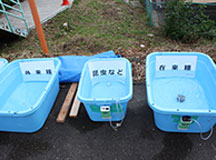
3. Classifying captured creatures
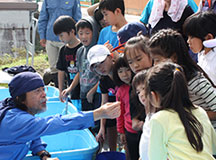
4. Children eagerly listening to an explanation about the creatures
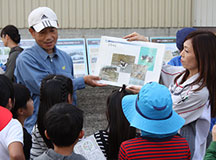
5. Participating in a wildlife quiz
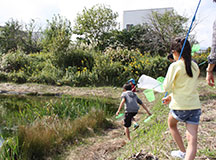
6. Bug catching in the factory's habitat
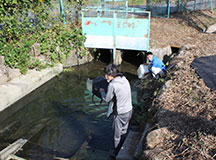
7. Releasing creatures back to their original habitat after the survey
<Results of the Wildlife Observation Event>
Most of the creatures found were native species, with only two Louisiana crawfish and an Asian clam as non-native species. The factory premises provide a precious environment where non-native species are less likely to be introduced, making it easier to maintain the ecosystem.
Here are some of the creatures captured during the event.
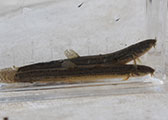
Pond loach
Uses whiskers around its mouth to search for food in the mud. Unusually for fish, it farts.
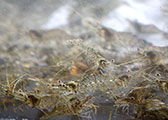
Lake prawn
Highly carnivorous and even attack its peers, but also eats the eggs of non-native species and carcasses, serving as a “cleaner-upper” in the water.
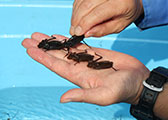
Sieboldius albardae (naiad)
Dragonfly larvae. Extends its lower jaw to prey on insects located at a distance.
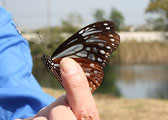
Chestnut tiger
Grows up eating toxic leaves as a larva and retains the toxin in its body as an adult. When preyed upon, it uses the toxin to attack, forcing its predator to spit it out.
3. Collaboration with the Local Community
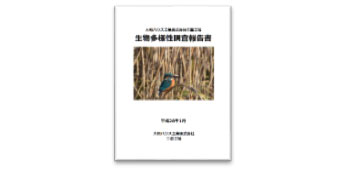
Biodiversity Survey Report
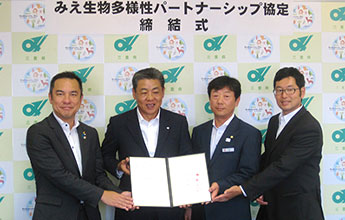
Mie Biodiversity Partnership Agreement Signing
From left to right,
Eikei Suzuki, Governor of Mie Prefecture
Koichi Kimuro, Representative Director and President of Azuma Sangyo Co., Ltd.
Yoshihiro Oba, Mie Factory Plant Manager, Daiwa House Industry Co., Ltd.
Masafumi Sakakieda, Chairperson of NPO Chotto Shizen
Initially, the wildlife observation event was held for employees and their families, but since 2015, local elementary school students and their parents have also been invited to participate. It has become such a popular event that it reaches the capacity of 20 groups within 30 minutes after registration opens.
Records of the activities are compiled into the Biodiversity Survey Report and panels, which are provided and displayed at Komono-cho, Mie Prefecture, and the Mie Environmental Learning Information Center.
As these activities continue, we have formed connections with various stakeholders, leading to the signing of the Mie Biodiversity Partnership Agreement in 2017, which has expanded our base of activities. We plan to look beyond the factory and focus on biodiversity conservation throughout Mie Prefecture, as well as enhancing future events.
4. Voices from Participants
Voices of Children
- ・It was my first time catching fish, but it was fun to catch and touch many of them. (3rd-grade boy)
- ・It was fun, I touched a shrimp! (1st-grade girl)
- ・The crabs and crawfish were huge. I want to do it again! (3rd-grade boy)
Voices of Parents
- ・I was surprised to see my child, who is usually scared and runs away, go catch fish on their own. (Woman)
- ・We catch fish like this near out home too, but I was surprised to see so many Hokkai shrimp. It was a good experience. (Woman)
5. Voices of Stakeholders
We are grateful to have a company like Daiwa House involved in such initiatives. Conserving biodiversity requires both manpower and funding. In Mie prefecture, we are promoting the Mie Biodiversity Partnership Agreement to match organizations and companies working on biodiversity with the goal of protecting the nature of Mie Prefecture as a whole.
We are considering how organizations with partnerships can collaborate with each other in the future. We hope that Daiwa House will continue these activities into the future.
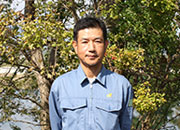
Mie Prefecture Department of Agriculture, Forestry, and Fisheries
Hideo Rikihisa
This retention pond is a valuable place for wintering birds. Up to 50 birds winter here at times, attracting goshawks as well. Since starting these activities, the number of small fish in the pond has increased, attracting kingfishers.
However, many cormorants, which we have not seen here before, are now coming to prey on the small fish. Cormorants consume a lot at once, so we are considering measures to prevent them from eating all the small fish in the pond. The challenges are endless, but we consider this a result of our activities.
We hope to use this place, which is difficult for third parties to access and where we can manage the nature fairly easily, as a model case for biodiversity conservation, and see these kind of activities spread.
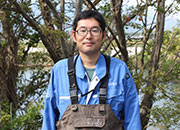
Azuma Sangyo CSV Section and NPO Chotto Shizen Chairperson
Masafumi Sakakieda
Previously, I was only concerned with the water quality of the retention pond and did not even recognize the presence of living creatures. However, the deterioration of the water quality led me to meet people and steer towards biodiversity conservation. Now, I look at the retention pond from above with interest, having fun finding little creatures dotted throughout.
Since many local people repeatedly come to these activities, we are considering ways of making into a more in-depth event. Also, since it costs a considerable amount of money, we want to create a system that provides benefits to the business, making it a sustainable activity in which employees actively participate.
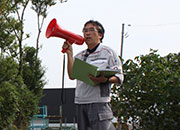
Daiwa House Industry Mie Factory
Quality and Environmental Management Section
Goji Moribe



